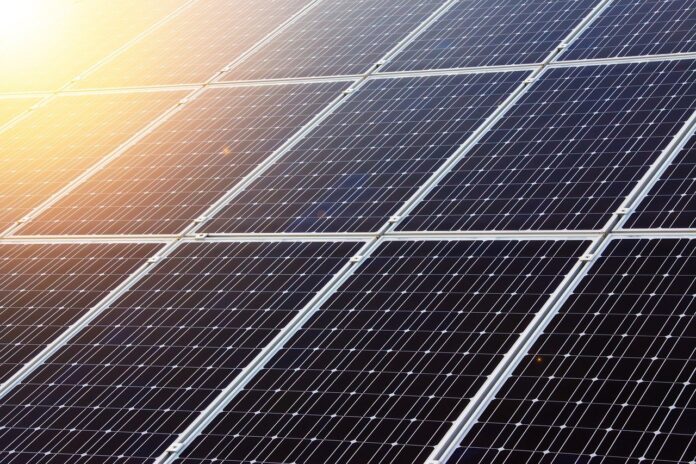If you don’t want to live rough when spending time in a camp, then you should consider using a solar generator for camping. It allows you to enjoy the comfort of modern life and you can also run your important appliances. A home solar generator is a great solution for fulfilling the power needs of a camp. It contains very few parts that include, solar panels, an inverter, a battery, and a battery charger.
The solar panels convert the sun rays into energy which is then stored in the battery. The inverter converts the stored DC power in the battery to AC power and releases it through multiple outlets that are placed in the generator itself.
-
Do solar generators produce noise?
The solar-powered generator produces a bare minimum noise. Such generators do not have any moving parts, which makes the system very silent. This makes the perfect choice for outdoor living.
-
How difficult it is to install a solar generator?
The portable solar generator that is used to power a camp does not require any technical knowledge to install and start running. Furthermore, thanks to its compact design, it is easy to maintain and carry.
-
What size of solar generator for camping you should get?
The size of the generator for your camp depends upon how big the camp is. Furthermore, it would also depend on how many appliances you want to run in your camp. Depending upon your estimated consumption, you can buy a solar generator in the power range of 882Wh to 3.6 KWh.
-
What is the cost of a solar generator?
The cost of a portable solar generator for camping depends upon its size, quality, brand, and wattage. The price range could be anywhere from £ 999 – £ 3499.
-
Important features of a solar generator
Here are some top features of a solar generator
1) Surge power capacity: One of the important features of a solar generator is its surge power capacity. It tells you, how much power the generator can provide instantaneously. If you are using the solar generator to power a motor or a fridge in your camp, then you should first check the surge power demand of that appliance. Based on it, you should look for a solar generator that has a maximum surge inverter rating that is higher than what you require.
2) The storage capacity: This is another important aspect of a power generator. The storage capacity is measured in Wh (Watt-Hours). It shows for how long you can keep your appliances connected to the generator. It also informs you (indirectly), how long it may take to fully charge the generator.
Most solar generators don’t come with built-in solar panels. You have to buy them separately. The number of solar panels is important as it has a direct bearing on how fast the battery is charged.
3) Different charging modes: If you can charge your solar generator only through sunlight, then you will completely depend upon weather conditions and sun exposure. Quality solar generators can be charged by other means also. A good quality solar generator will provide you the alternative option to either charge it from an AC power outlet or even with the help of your car battery.
4) Battery type: For solar generators, mainly two types of batteries are available in the market, lead-acid batteries and lithium-ion batteries.
Lead-acid batteries: These are the most common batteries found in the market. However, they are less durable than lithium-ion batteries. The cost of these batteries is less compared to lithium-ion batteries. However, one big disadvantage of this battery is that it is very heavy which makes it unsuitable for a solar generator for camping. As portability is a big issue for a camp generator.
Lithium-ion batteries: This type of battery is more commonly used in modern equipment(s). They are very light, more compact, and have a longer lifespan than lead-acid batteries. However, they are also costly. In most solar generators, you will find lithium-ion batteries because they are lighter and more durable.
5) Other unique features: In addition to the features explained above, there are other important features of a solar generator.
Many solar generators have Pulse Width Modulation (PWM) chip. This chip helps in converting the analog power that is produced in the solar panels into digital power, which is more controllable.
Some other solar generators come with Maximum Power Point Tracking (MPPT). It is a charge controller that helps in maximising the peak voltage that can be extracted from solar energy. This allows the solar generator to charge more quickly. Additionally, some other additional features of solar generators include USB outlets. These outlets ensure faster charging of the appliances.
The solar generator may also come with an integrated flashlight, integrated fuses, surge protection, and a Battery Management System (BMS).
Features of the solar panels used in a solar generator
There are different types of solar panels and they offer varying ranges of efficiency.
- Monocrystalline solar panels: These are one of the most common types of solar panels that you will find in the market. These panels are made up of silicon wafers that consist of a single crystal. They are more efficient than monocrystalline solar cells and also more expensive.
- Polycrystalline solar cells: These solar panels are made through melted bits of silicon. The electrons can move between the fragments, but their efficiency is not that great. However, it is cheaper than monocrystalline solar panels.
- Amorphous crystal panels: These are the new entrant in the solar panel segment and use the latest technology. These solar panels are highly flexible, slim, durable, lightweight, and cheap.
You may find the solar generator for camping expensive if you look at the initial cost. However, you have to realise that this is just a one-time investment. You don’t have to pay for the fuel or maintenance (it requires very little maintenance) later.
Furthermore, the portability, efficiency, and ease of use make a portable solar generator the ideal solution to fulfil the energy demand of your camp. It could also be used in an emergency as well as a backup solution in case of power disruption.







